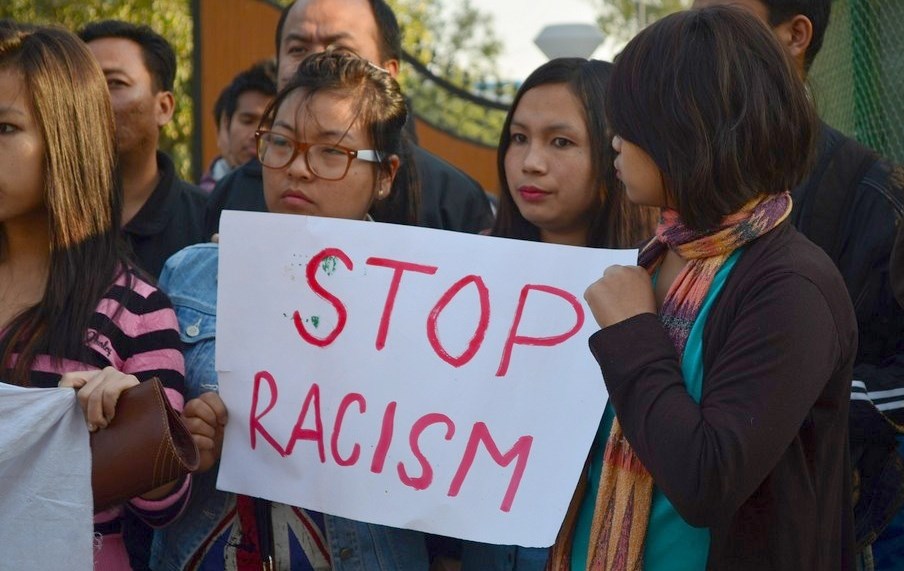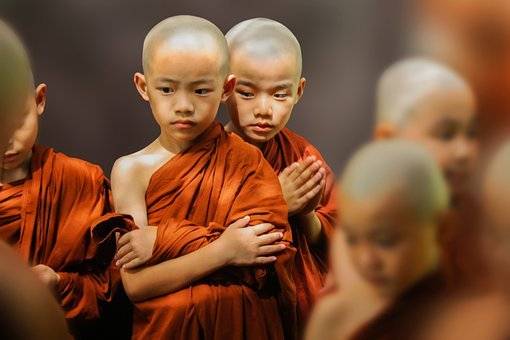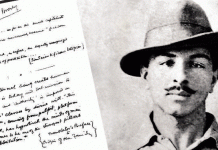
I was walking towards the library on a Wednesday afternoon, little did I know that I was actually walking towards an inevitable fate that every person with facial features that are “other-ed” encounters innumerable times during their engagement with the world. An acquaintance of mine quite “respectfully” asked if I could pretend to be or imposter as an Indonesian woman to assure someone that she is friends with a native Indonesian.
According to her my Mongoloid features were enough to imposter as an Indonesian. Within a few seconds when she realized I was going to decline her request, another desperate and insensitive idea was pitched, she said would ask a ‘momo seller’ in Munirka to pose as an Indonesian. I walked inside the library in anger and confusion. Anger, because I thought that I had just faced racism and confusion because I was perplexed if the episode could be labelled as racism.
Several episodes of racism such as the one mentioned above are left unnoticed because, generally it is perceived, that racism applies only to visible forms like physical and verbal attacks. However, in many ways most emotionally draining, stress-provoking forms of racism are the kinds that racialised (perceived patterns of physical difference—such as skin colour or eye shape, used to differentiate groups of people, constituting them as “races”) people face in everyday life (Tyson L., 2006). Even when racialised persons take cognizance of “subtle” or indirect forms of racism like jokes, they are accused of being oversensitive and said that they see racism where it doesn’t exist (just like many women are accused of seeing sexism where sexism does not exists, when in fact it does exist in every joke and memes that are circulated about nagging wives, women with intellectual quotient in negative, and so on) Just like one sex doesn’t see such jokes that are directed against another sex as sexists, the dominant race also don’t choose to see such jokes, commentaries, memes, etc. as carrying out racism. Race as a concept is not discriminatory, it was originally introduced merely as a convenient way to refer to groups of human beings in different geographic locations. However race becomes racism when there is an unequal power relations that grow from the sociopolitical domination of one race by another and that results in systematic discriminatory practices, therefore, anyone in a position of power as member of the sociopolitical dominant group with the ability to segregate, dominate or persecute other race can be a racist (Tyson, 2006). There can be many interests behind racism there could be an economic interest, to prove that the dominant group is better than the non-dominant racialised groups, etc. Three terms namely race, racialisation and racism go hand in hand. Now that I think of it, there were numerous episodes of racisms that I have left unnoticed because I had internalised racism without ever bothering to raise a question about it.

A couple of years ago in a program where new students had to go to the stage and introduce themselves, a person with “Mongoloid” facial features was joking about how people think of him as a north eastern, and another student was quick to say that he was glad at not being called a ‘north-eastern’ despite the small size of his eyes. These people did not want to be associated with people who have Mongoloid features because they are racialised as those who hold meagre jobs like selling
momos on the street, not being good at studies, having poor linguistic abilities, and so on. These episodes reflect that racism has not disappeared, it has just gone underground. But perhaps the society continues to practice racism in a subtle manner to avoid legal prosecution and it has flourished in ways that only victims know of. To be proud of one’s roots is a good thing but to dismiss in disgust a minority’s roots or ethnicity is a racist act or racism. Racism emanates from racialisation, it refers to the fact that dominating society racialises different minority groups in different ways at different times in response to shifting needs. For example, Gorkhas are racialised as a race best as soldiers, honest but hot headed, etc. mostly by British when there was a dire need of soldiers to fight on their behalf, these attributes lives on among Gorkhas even today and in villages most of the young boys try to join armed forces because the stories of bravery are narrated to children in every household, in fact there are famous songs, sung in Nepali language on the same, these are not the only ways through which we know that Gorkhas are good as soldiers. Racism is sometimes also institutionalised by incorporating racist policies and practices in the institution by which a society operates. We also know it because a particular regiment is not only named as Gorkha regiment but a huge portion of Gorkhas are also recruited in the same regiment. This assurance in turn restricts these young boys from exploring many other career options, which means that racism imposed and institutionalised is also internalised.
A particularly damaging form of everyday racism consists of constantly underestimating the ability of minority persons (Tyson, 2006). An IAS officer Pooja Elangbam from Manipur once stated in an interview that how her teachers and Professors were happy and surprised to see her, a Manipuri, a North eastern girl excel in academics. Like Tyson points out that ability of minority persons is underestimated. Even when a minority person speaks the language of the dominant race, they are mostly vigilant in pointing out the mistakes and making a joke out of it rather than appreciating the efforts and intelligence of the person who tries to learn the language. Also when minorities refuse to be racialised by the dominant race they may be accused as communal but won’t make any effort to learn the language of the minority or even show remorse for not having learned other Indian languages. Public icons from the north east are mostly interviewed in English or made to speak in Hindi hence, every time someone speaks a regional language with a face with Mongoloid features it will be assumed that they belong to one of the south or Southeast Asian countries.

When I was asked to pretend to be an Indonesian it was thought that since I do not have the same facial features as the dominant race and since our mother tongues are not thesame either, I wouldn’t be identified as “them” or the “other”. Everyday racism like this has a psychological impact on the victim while the perpetrators might not even know that it is occurring because they don’t identify it as racism. Only banning few discriminatory words from to avoid racism is not enough. Children as well as adults should be taught and informed on how to identify racism in everyday life, how it is experienced and how can it be countered. Banning words like “Chinki, Chinese, Momo” etc. gives an impression that these are racist comments while there are plethora of other ways to inflict racism, which should be identified and not normalised as I did by just walking away, racism is not only what is has been prescribed to be it is more than that, we should all react sensibly towards sensitive subjects.
Shital Baraily is perusing her M.Phil from the Center for East Asian Studies, School of International Studies, JNU, New Delhi













